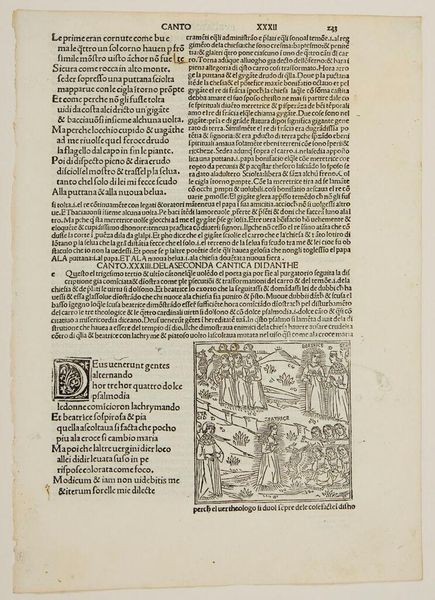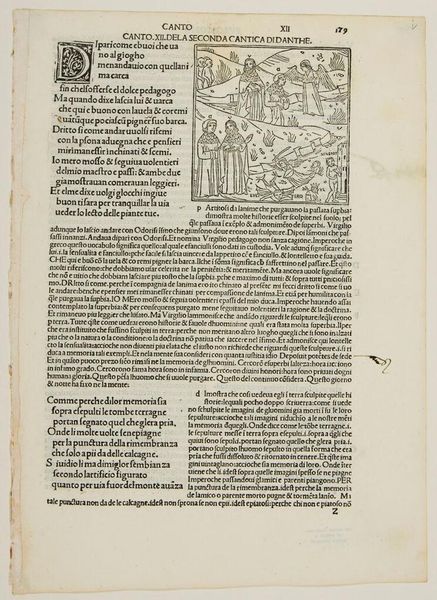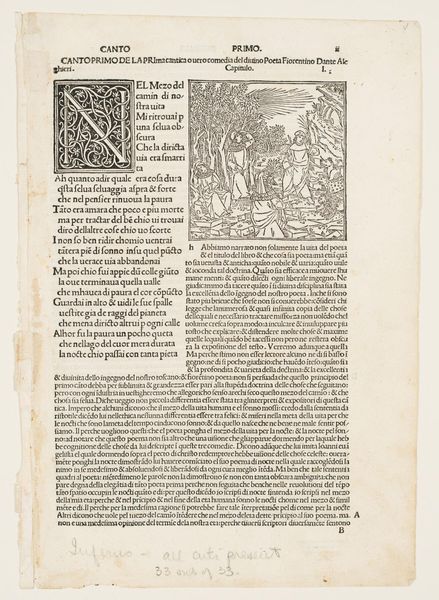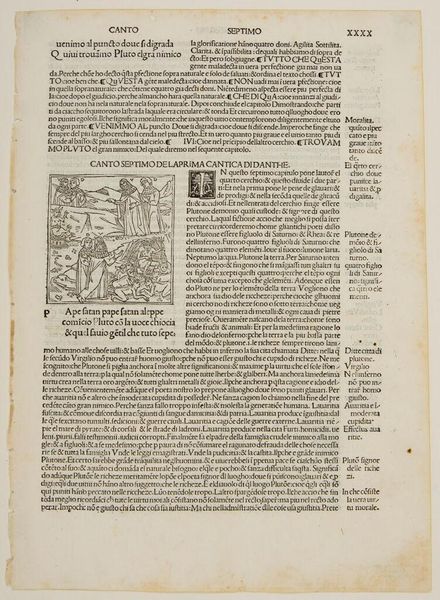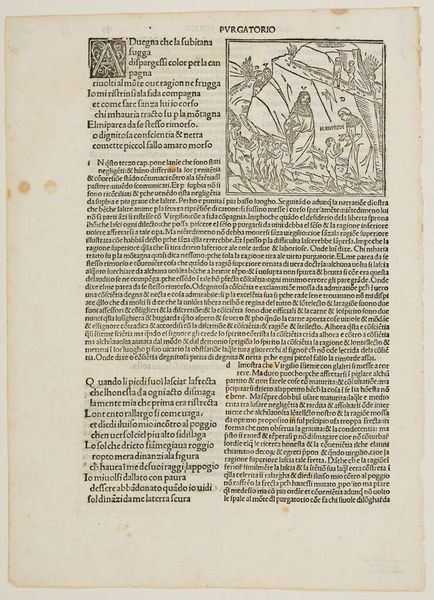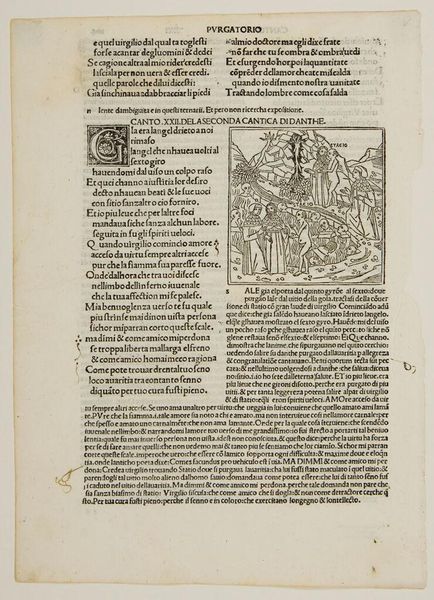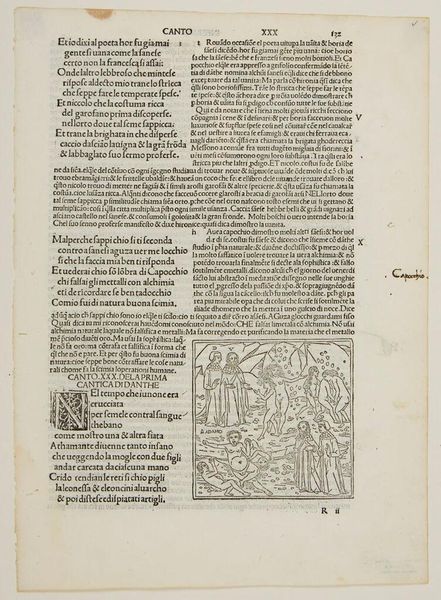
Canto XXXII. Circle 9: Cocytus / Compound Fraud; Round 1: Caïna â?The Treacherous to Kin; The Counts of Mangona; Camicon de' Pazzi c. 15th century
0:00
0:00
Copyright: CC0 1.0
Editor: This is an illustration from an early edition of Dante's *Inferno*, depicting Canto XXXII, "The Treacherous to Kin." The scene is bleak and unsettling, with figures trapped in ice. What strikes you about the symbolism in this image? Curator: Indeed. The frozen landscape, Cocytus, serves as a powerful symbol for the complete absence of warmth, love, and compassion – emotions expected even among kin. Notice how the figures are positioned, some with their heads above the ice, others entirely submerged? Editor: Yes, I see that. What does that signify? Curator: Consider how Dante uses visual cues to indicate varying degrees of betrayal. Those with their heads above the ice may retain some semblance of humanity, some capacity for remorse, whereas those fully submerged are beyond redemption, utterly consumed by their treacherous acts. What emotional impact does this frozen tableau evoke in you? Editor: It feels incredibly isolating and hopeless, a visual representation of ultimate spiritual coldness. I hadn't considered the degrees of betrayal before. Curator: Exactly. The artist uses the very element of ice to represent the chilling consequences of broken familial bonds, a stark reminder of the cultural weight placed on kinship.
Comments
No comments
Be the first to comment and join the conversation on the ultimate creative platform.
